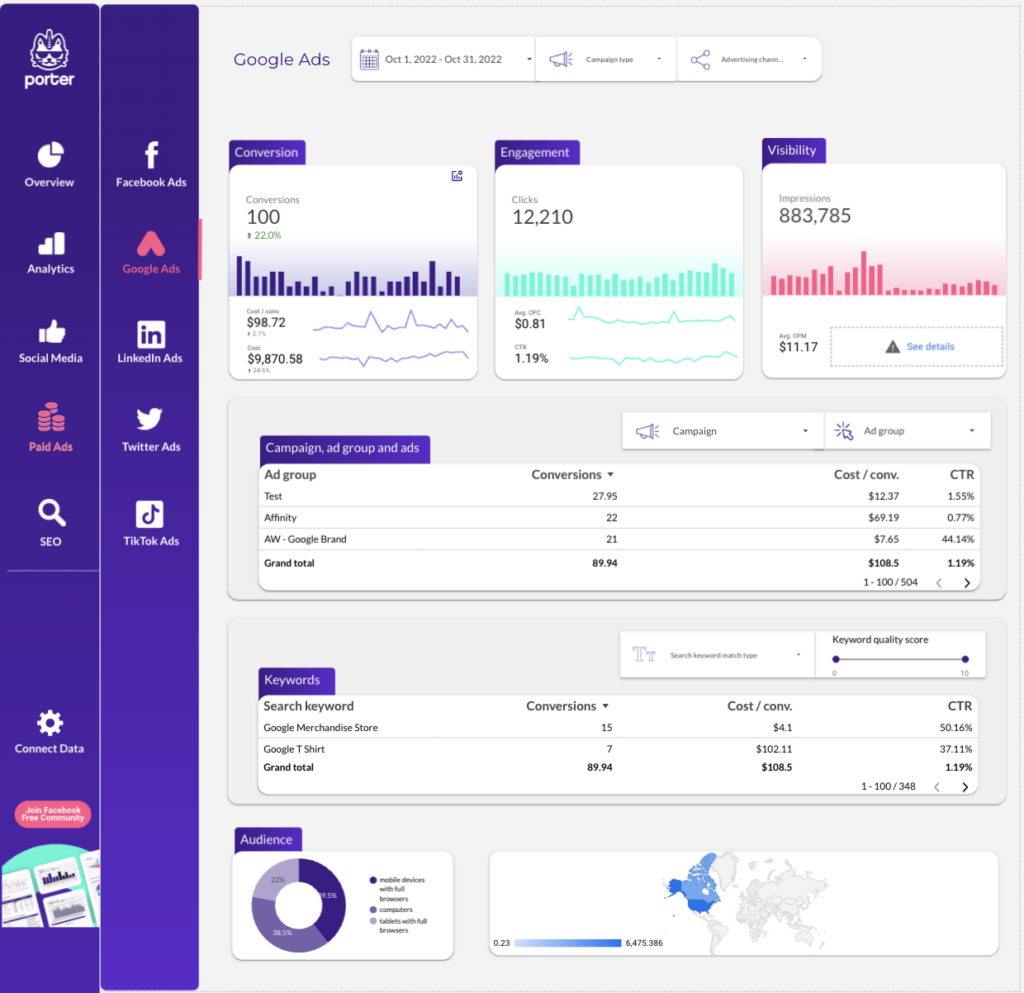A digital marketing report should include metrics that are broken down by visibility, engagement, and conversion. It should segment data by campaign, channel, audience, content, objective, and date. For example, visibility metrics can include impressions and reach, engagement metrics can include click-through rates and time spent on site, and conversion metrics can include conversion rates and revenue generated. This breakdown and segmentation allows for a comprehensive analysis of the performance of different digital marketing efforts.
To build a digital marketing dashboard, 1) connect your data and accounts such as Google Analytics, Facebook Ads, or Mailchimp. 2) Select the metrics to monitor performance like click-through rates, conversion rates, or bounce rates. 3) Segment or break down data by campaign, channel, audience, product, customer content, objective, date. For example, you can segment data by social media campaigns, email marketing campaigns, or SEO campaigns. 4) Add filters or buttons to make your report interactive, like filtering by date range or by specific campaigns. 5) Share your dashboard via PDF, scheduled emails, or links to relevant stakeholders.
Yes, Looker Studio allows you to download your report as a PDF. To do it, follow these steps:
Before downloading your report choose the date range you want to visualize on your report.
Click on the “File” menu at the top left corner of the screen.
Select “Download as” from the drop-down menu and choose “PDF.”
You can choose which pages you want to download, and also you can add a password to protect the report and add a link back to the online report.
Click on “Download” to save the report on your device.

